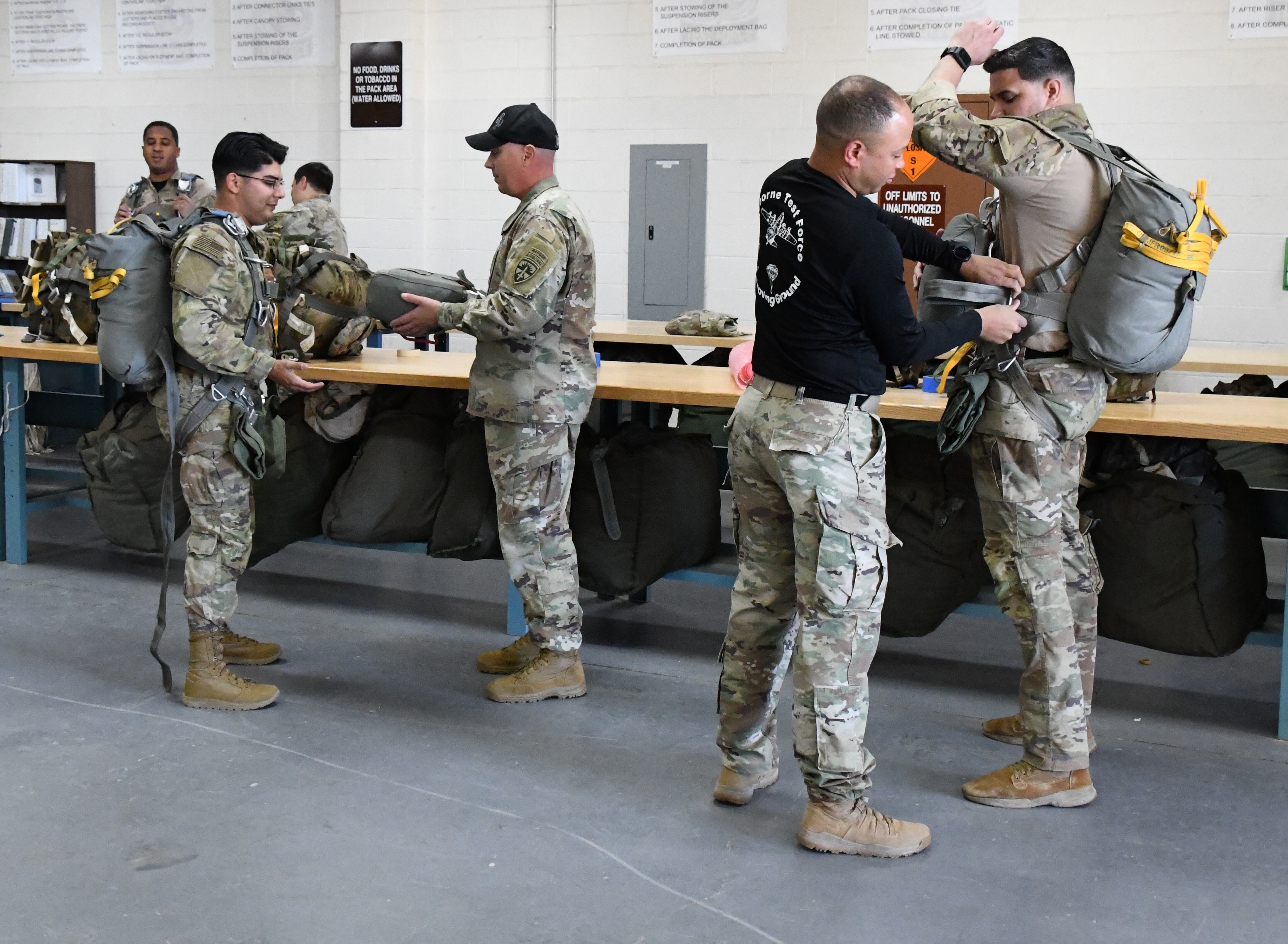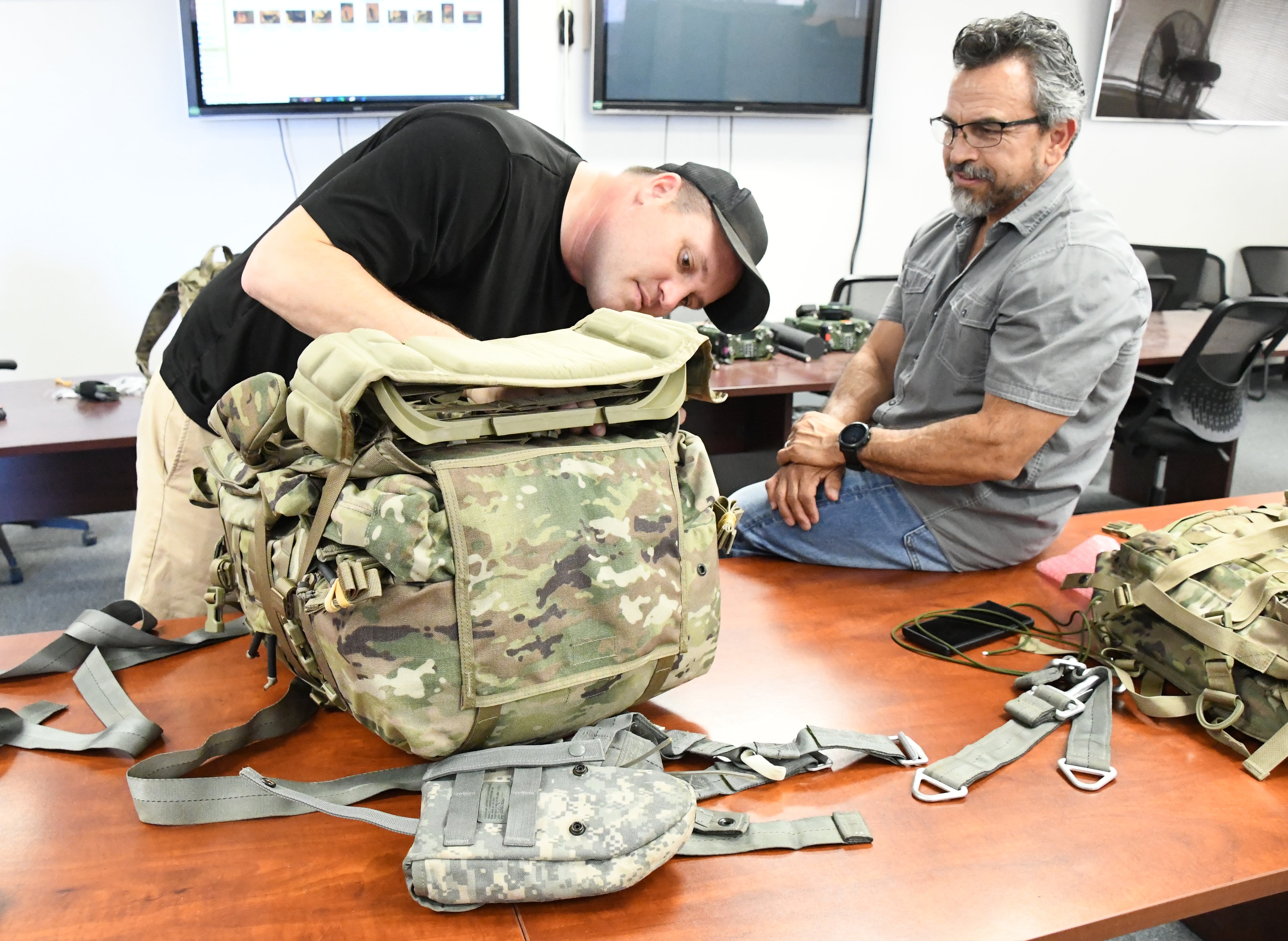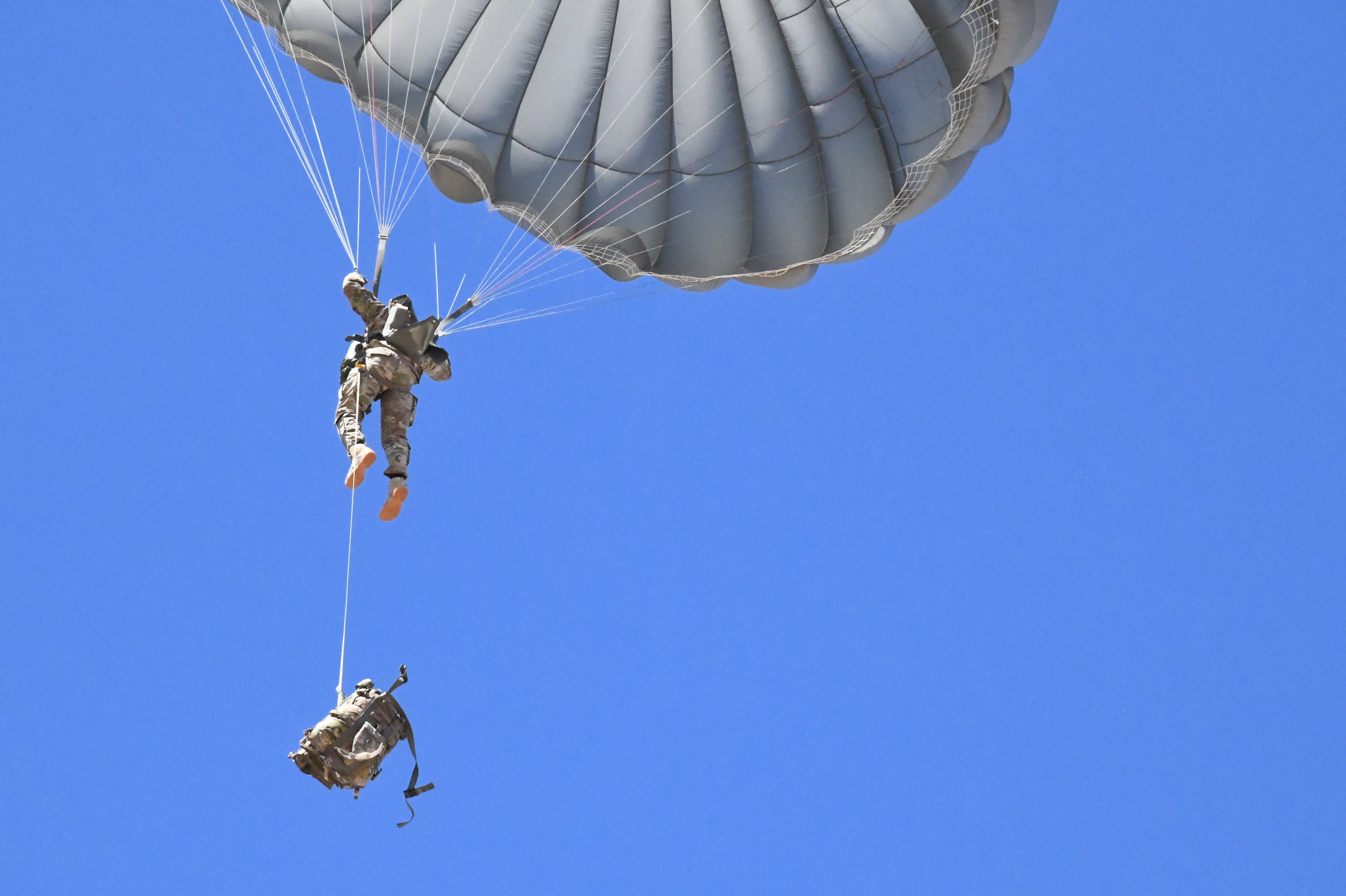The Army is testing a new rucksack that was purpose-built for radio operators to reduce damage to systems on drops, add space, improve fit and cut down on heat.
The Radio Carrier Rucksack was assessed in airborne drops with soldiers at Yuma Proving Ground, Arizona, according to an Army release.
The radio ruck is being developed at the Natick Soldier Systems Center by Army’s Combat Capabilities Development Command Soldier Center.
Soldiers evaluated the ruck with both the AN/PRC-158 and AN/PRC-162 radios in “combat-realistic scenarios” to see whether the new setup could prevent damage to radios during parachute jumps.
Developers have modified the existing Modular Lightweight Load-carrying Equipment assault pack that’s fielded across the service.
“The radio harness allows the radio to be connected to the existing assault frame, while the side pouches allow for individualized space to store antennas away from other equipment and gear,” explained Bob Cohen, Manpack Lead Test Engineer.
That lets users secure the radio to the pack frame easier, allowing for better weight, balancing and cooling. Also, the modifications give users better access to the radio while carrying the ruck and allows for more storage.
“There’s additional space in the bottom compartment that can be used to individually store spare batteries and other ancillary equipment for ease of access,” Cohen said.

In the new configuration, the ruck will hold the radio, antenna, battery and the soldier’s basic equipment load.
Recent tests at Yuma allowed developers to work out an extra modification, specific to airborne operations.
“The configuration of these rucks is slightly different than the currently issued rucks,” said Sgt. 1st Class Cody Lavalla, a soldier assigned to the Army’s Airborne Test Force at Yuma. “We are going through the process of figuring out how to rig the harness single point release to the ruck so all the equipment will survive the jump and is safe for the jumpers.”
The single point release on the harness is what keeps the ruck close to a paratrooper’s body during the initial phase of the jump. But for safe landings, paratroopers must release the ruck to drop below them.
At about 150 feet off the ground, users lower the ruck with the release, extending the ruck by 15 feet below before landing.
“We don’t want the ruck still attached to us when we prepare to land on the ground, or we risk injuries as we do our Parachute Landing Falls,” Lavalla said.

The system clears the ruck from their body for landing but keeps it tethered so it’s nearby once the paratrooper is on the ground and quickly gathering their parachute and gear.
“The test went well. The results of the test demonstrated that the rucksacks successfully secure and protect the radios during airborne operations. There was no damage to the rucks or radios observed during the inspection that occurred after the test was complete,” Lavalla said.
The radio ruck is expected to field to units such as the 82nd Airborne Division in early 2025, according to the release.
Todd South has written about crime, courts, government and the military for multiple publications since 2004 and was named a 2014 Pulitzer finalist for a co-written project on witness intimidation. Todd is a Marine veteran of the Iraq War.







